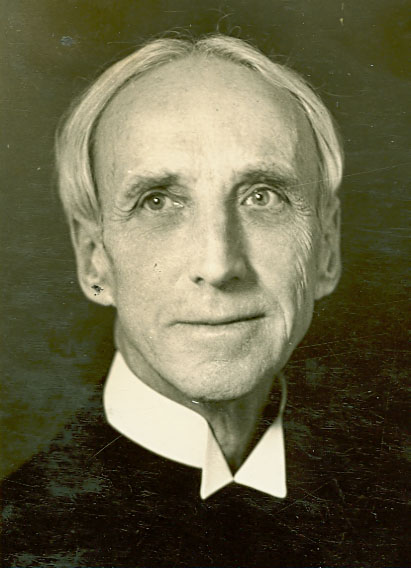Charles Atwood Campbell (1872-1939):
Dean of Chapel and Entomology Expert
|
Born on June 18, 1872 in Desoto, Iowa to Emma (Charlotte) and Reverend William Campbell, Charles Atwood spent his youth in Kansas. In 1891, he received his Bachelor of Science degree from Kansas, intending to become an entomologist. Campbell worked with the Kansas State Experiment Station and United States Biological Survey for a year for a year, before deciding to conduct postgraduate work in philosophy and Greek at Emporia College. Despite his previous intentions, however, Campbell became interested in entering the ministry and entered the Auburn Theological Seminary, where he taught logic and rhetoric as a student instructor. After he graduated in 1893, the First Presbyterian Church of Ithaca, New York, as well as the Second Reformed Church of Philadelphia in Pennsylvania, both invited Campbell to their assistant-pastorships. He declined, instead accepting a position at the First Presbyterian Church of Providence, Rhode Island. From 1896 until 1926, he served pastorates in Providence; Philadelphia; Denver, Colorado (where a fire destroyed his church); and Elizabeth, New Jersey (1917 to 1926). During his three years in Rhode Island, he also attended lectures at Brown University. Campbell retained an interest in natural science, however, and joined the Biological Society of Colorado and made contributions to the Colorado Museum of Natural History. As a result, the University of Denver conferred a Doctor of Divinity degree upon him in 1908. In 1909, Campbell moved to Dayton, Ohio and remained for eight years. Despite the loss of his library and collection of insects during a flood in 1913, Dayton provided Campbell with many opportunities for community service. He moved in 1917 to Elizabeth, where he worked at the First Presbyterian Church that had, throughout its history, such notable pastors as James Caldwell, John McDowell, Nicholas Murray, Everard Kempshall, and Princeton University’s Jonathan Dickinson. In 1939 Hamilton Holt, the president of Rollins College in Winter Park, Florida, requested Campbell’s aid in developing the character of the school’s students. Campbell so impressed Mrs. Frances Knowles Warren with his eloquence and spiritual influence on the students that when considering a memorial to her father, Warren decided to fund the construction of Knowles Memorial Chapel. Designed by Ralph Adams Cram and dedicated in 1932, the iconic structure became a distinctive feature of the campus. As the professor of Biblical literature, entomology, and first dean of Knowles Chapel, Campbell became quite popular and influential on the student body. One student described him as “a great man, living to the best of his ability and inspiring others to do the same. He related his subjects to all of life, emphasizing the positive and highest values.”[1] In addition to his duties at Rollins, Campbell served as the pastor of nearby Altamonte Chapel, in Altamonte Springs, during winter seasons. His devotion to the Florida Community, however, also related to his experience with entomology. In 1929 Campbell took part in a campaign to eradicate the Mediterranean fruit fly during an infestation in the Florida Citrus Groves. He also published numerous works, such as The World We Live In, Natural and Social Parasitism, A Handbook in Entomology (1927), The Wilderness Way, and Traditions of Hartwood, in addition to magazine articles, songs, and poems. For his various achievements, Campbell received the Algernon Sydney Sullivan Medallion (in absentia, owing to illness), and a window dedicated to him in the east wall of Knowles Chapel’s south ambulatory. Campbell died on January 7, 1939 in Orlando, Florida after having “w[o]ve[n] his life into the fabric of an exalted and vital undertaking and give[n] himself in full surrender to its fulfillment.”[2] -Angelica Garcia [1] Clara Adolfs, nomination and justification for Rollins’ best professors, 1955, Department of Archives and Special Collections, Box 45E, Olin Library, Rollins College, Winter Park, Florida. [2] Dr. Charles A. Campbell, “The Charm of Living: An Address to the Students, Faculty, and Friends of Rollins,” January 1, 1930, p. 6. |
||||
| Project Home | List of Names | Rollins Archives | Olin Library | Rollins College |
